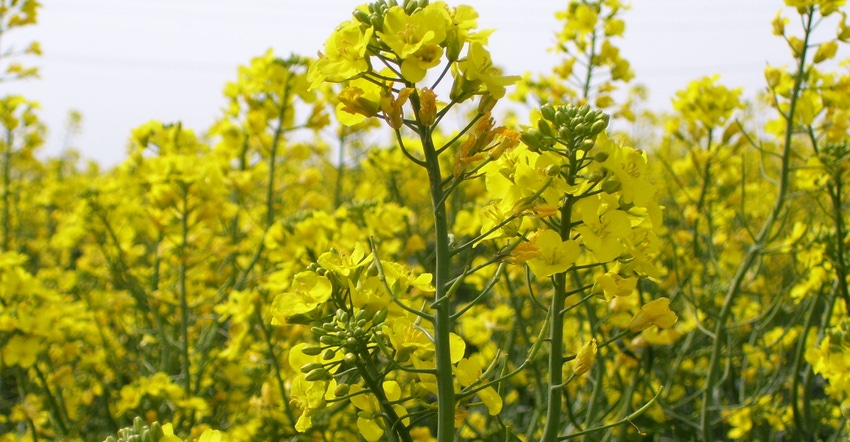February 24, 2022

Mike Stamm, a Kansas State University canola breeder, says breeding has aided improvements in canola’s ability to survive the winter. However, that doesn’t mean farmers can forget about scouting their fields after particularly cold winter weather.
Stamm says as farmers scout their fields, they should look for the growing point of their canola to be close to the soil surface, because that is where it is the most protected from damaging cold.
Provide a strong start
This year’s canola had a tough beginning because the planting zone moisture had dried out in many places last fall, causing producers to seed their fields and then hope for rain. Stamm says that’s not recommended because the initial top growth is important for getting the canola through the winter.
Fortunately, he says, most producers experienced good levels of moisture and above-average temperatures last October, allowing for the canola to catch up.
“For the most part, the canola I saw across [Kansas] was in excellent shape going into the winter months,” Stamm says, noting that winter survivability “is a balance of genetics to increase the chances of survival, and planting on time to avoid excessive fall growth.”
According to Stamm, the plants had achieved optimum growth last fall, though he warns that too much top growth can result in other concerns. For example, in Manhattan, the canola was too big.
Scouting tips
If winterkill is a concern, Stamm says there are a few ways to examine the canola crop to see if its defenses against the cold are effective:
Canola plants with low crowns that are prostrate to the soil surface is a good sign.
Squeeze the crown. If it is green and firm, the plant has not been winter-killed.
If you see whitening of the stem tissue or the crown, or the stem is “squishy” when you squeeze it, you could potentially have some winterkill show up later.
Stamm says the canola field can withstand going through some self-thinning and winterkill if it is scattered throughout the field, because other plants will branch out to compensate.
For more information, producers can may contact their local Extension office.
Source: Kansas State Research and Extension is solely responsible for the information provided and is wholly owned by the source. Informa Business Media and all its subsidiaries are not responsible for any of the content contained in this information asset.
You May Also Like




